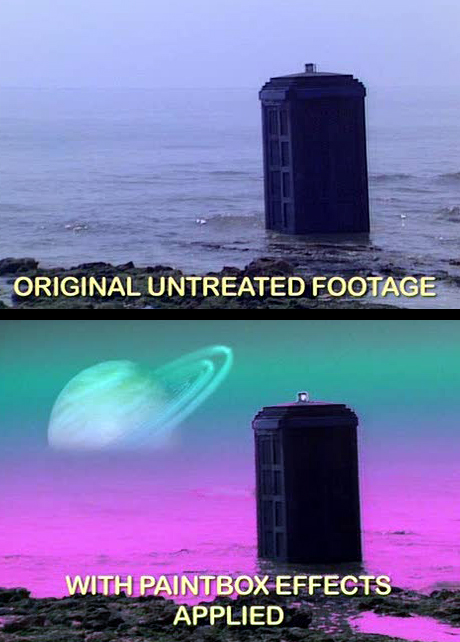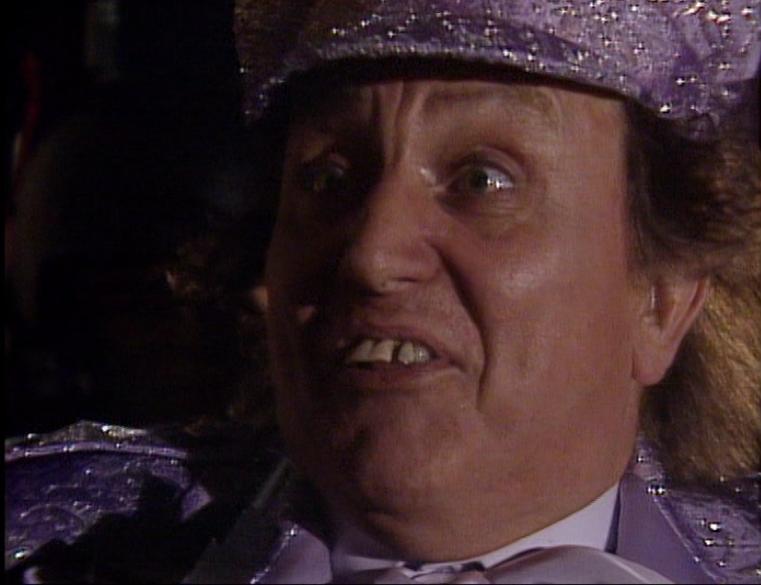Transmat:Doctor Who: Difference between revisions
m (Reverted edits by 184.185.141.100 (talk | block) to last version by SOTO) |
No edit summary Tag: sourceedit |
||
| Line 1: | Line 1: | ||
__NOTOC__ | __NOTOC__ | ||
{{template:transmat:{{PAGENAME}}}} | {{template:transmat:{{PAGENAME}}}} | ||
<div | <div id="tr-box-container" style="width:98%"> | ||
<div id="tr-box-container" class="tr-box-cols" style=margin-top:40px> | <div id="tr-box-container" class="tr-box-cols" style=margin-top:40px> | ||
<div class="tr-box one"> | <div class="tr-box one"> | ||
Revision as of 09:17, 10 June 2016
Verity Lambert, the first producer of Doctor Who, was born in London on 27 November 1935. She served as producer from An Unearthly Child to Mission to the Unknown. Her work on Doctor Who was the first time she had been a full producer and was one of the first times a woman had such a role in television. Lambert died on 22 November 2007, the very day before the forty-fourth anniversary of the show's debut.
Think Doctor Who is just for boys? Don't you believe it. Not only was the show's very first producer a woman, but it would never have come back without the fierce advocacy of Jane Tranter and Julie Gardner. Considering her importance to Doctor Who it's somewhat ironic that Tranter's only on-screen credits are for Torchwood: Miracle Day. But Gardner, her "partner in crime", is tied only with Russell T Davies as the most prolific producer in Doctor Who history.
Though largely unknown to non-British audiences, Ken Dodd was a major star in the United Kingdom when cast to play the Tollmaster in the Seventh Doctor serial, Delta and the Bannermen. Find out more about the thousands of actors who have been on Doctor Who by exploring Doctor Who guest actors.
The careers of the Fifth, Sixth, Seventh and Eighth Doctors are significantly longer in audio than on television. Check out their latest works at category:2024 audio stories
Officially, only The Lodger has been explicitly adapted from a comic strip — also called The Lodger.
However, several stories have clearly taken material from comic strips — often those in Doctor Who Magazine. The Shakespeare Code contains a good amount of material from A Groatsworth of Wit, and the notion of the Doctor absorbing the time vortex in order to spare a companion was explored in both The Parting of the Ways and The Flood.
Donald Baverstock was the BBC executive who set the the wheels in motion that eventually led to the creation of Doctor Who. Essentially the original commissioner of the programme, he hired Sydney Newman and later imposed a sense of financial responsibility upon producer Verity Lambert.
But Baverstock wasn't the only BBC executive to have a profound impact on the development of Doctor Who. Make sure you read about Lorraine Heggessey, Mark Thompson, Danny Cohen, George Entwistle, Tony Hall, Shaun Sutton, Sydney Newman and others.- 1964 - Part one of the TV Comic story The Klepton Parasites was published. The Doctor Who comic strip made its debut in the 674th issue.
- 1968
- Episode two of The Invasion premiered on BBC1.
- Part two of the TV Comic story Ice Cap Terror was published.
- 1974 - Part five of the TV Comic story Lords of the Ether was published.
- 1981 - Episode one of The Krotons was repeated on BBC2.
- 1987 - Part two of Delta and the Bannermen premiered on BBC1.
- 1988 - Part two of The Happiness Patrol premiered on BBC1.
- 1989 - DWM 155 was published by Marvel Comics.
- 1994 - DWCC 26 was published by Marvel Comics.
- 1996 - Part four of the Radio Times comic story Ascendance was published.
- 1998 - The VHS box set The Ice Warriors Box Set was released.
- 2006 - DWM 376 was published by Panini Comics.
- 2007 - An anthology containing The Mind's Eye and Mission of the Viyrans was released by Big Finish Productions.
- 2010
- Part two of Lost in Time premiered on CBBC.
- Doctor Who: The Complete Fifth Series was released on Region 1 DVD.
- The CD Doctor Who - Series 5 was released by Silva Screen.
- 2015 - Extinction was released by Big Finish.
- 2016 - Order of the Daleks was released by Big Finish.
- 2020
- Time Lord Victorious: Road to the Dark Times was released on Blu-ray.
- Dalek Empire: Series I - II and Series III - IV were released by Big Finish.
- The Daleks was published by Panini Comics.
- 2023
- DWM 597 and 60 Moments in Time were published by Panini Comics.
- The War Master audio anthology Rogue Encounters was released by Big Finish.
- ... that the earliest licensed Doctor Who Christmas tale in any medium was the First Doctor, John Who and Gillian Who adventure, A Christmas Story?
- ... that Barbra Streisand and Donna Summer were both responsible for the song, "Enough Is Enough"? (PROSE: Wetworld)
- ... that the Beatles' song "Paperback Writer", once a part of the soundtrack to The Evil of the Daleks, has effectively disappeared from the Doctor Who universe?
- ... that the Second Doctor, Ben, Polly and Jamie were almost fed to sharks as a sacrifice to Amdo? (TV: The Underwater Menace)
- ... that the Catkind evolved on the planet New Savannah? (COMIC: Agent Provocateur)
- 1922 - Supervising sound editor John Peverill was born.[1]
- 1929 - Actor Eric Thompson was born.[2]
- 1938 - Actor Tim Goodman was born.[3]
- 1950 - Actor Ewart James Walters was born.[4]
- 1951 - Actor John Benfield was born.[5]
- 1965 - Actor Lionel Gadsden died.[6]
- 1966 - Actor Maxine Evans was born.[7]
- 1974 - Actor Ian Hallard was born.[8]
- 1993
- Composer Stanley Myers died.[9]
- Actor Lizzy Watts was born.[10]
- 1994 - Actor Ralph Michael died.[11]
- 2021 - Actor Roy Holder died.[12]
- 1967 - Location filming for The Enemy of the World concluded at Villiers House and Walpole Park. (TCH 11)
- 1972 - Location filming The Three Doctors took place. (REF: Doctor Who The Handbook: The Third Doctor)
- 1994 - The BBC Radio 2 audio story The Ghosts of N-Space was recorded at Maida Vale 6.
- 2004- The Big Finish audio story Dreamtime was recorded at the Moat Studios.
- 2005
- Rewrites known as a "blue revision" or "blue rewrites" were made on Attack of the Graske, or Christmas Interactive Challenge: Attack of the Graske, and on Rise of the Cybermen / The Age of Steel. For Graske this mainly gave clearer instructions on how to play the hatchery segment of the interactive adventure to younger audiences, while the rewrites on Rise and Steel covered the scenes where Jackie complained about her birthday banner, the Tenth Doctor agreeing with Rose Tyler about meeting Pete Tyler, the two at the Tylers' mansion, the Doctor at the computer terminal, Pete asking about Torchwood, the arrival of the Cybermen, and Angela Price and the Doctor inside the tunnel filled with Cybermen. (DWMSE 14)
- The Big Finish audio story The Settling was recorded at the Moat Studios.
- 2011 - The Big Finish audio story The Emerald Tiger was recorded at the Moat Studios.
- 2015 - The Big Finish audio story Vampire of the Mind was recorded at the Moat Studios.
- 2016 - Big Finish's audio anthology The Third Doctor Adventures: Volume Three took place at the Soundhouse.
- 2018 - The Big Finish audio story Dead Woman Walking was recorded at the Soundhouse.
- 2022 - Big Finish's audio anthology Comrades-in-Arms was recorded at the Soundhouse.




